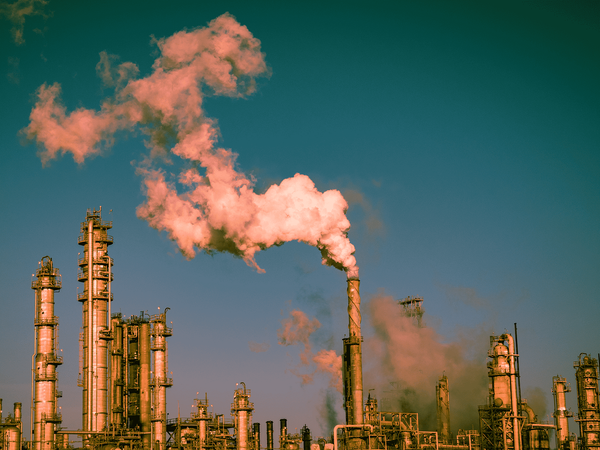7 disadvantages of solar energy

The challenge of solar energy is not only the initial installation cost but includes environmental pollution linked to manufacturing, heavy dependence on weather conditions, lower efficiency of cells and limited energy storage capabilities.
On average, a 400 Watts (W) solar panel receiving approximately 5 hours of peak sun exposure per day can generate about 1.8 kWh of electricity daily. Considering a typical household needs about 30 kWh per day, this house requires 15 panels, each at 400 W.
But in reality, the calculation is not that straightforward. The adoption of solar energy comes under the influence of various factors, because of which their drawbacks are discussed, with their amazing advantages.
Related: Renewable energy: a slow but steady shift
Expensive upfront cost
According to Consumer Affairs in 2023, the typical expense for a 6 kW solar panel system amounts to $12,573 in the U.S., following the federal tax credits. Although the investment in solar energy eventually yields and pays back within 7 to 10 years, that amount is enough to pose a barrier for some prospective customers.
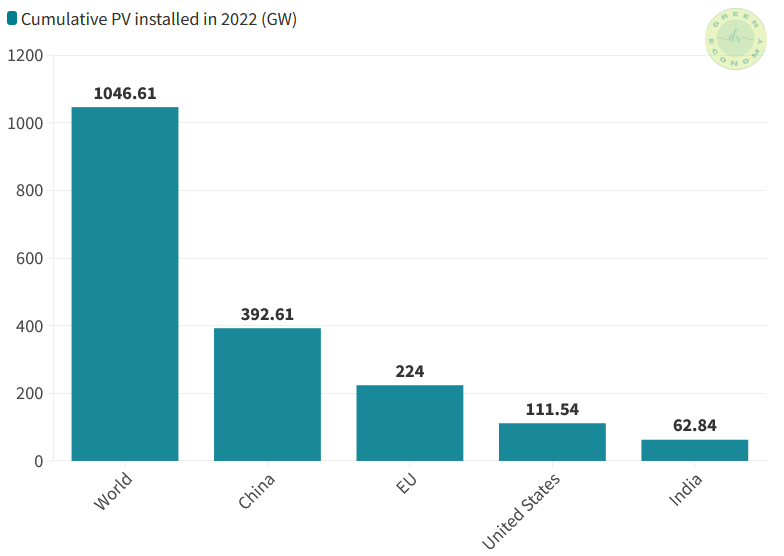
The cumulative PV installed in 2022 around different regions is shown in Figure 1. In 2022, China had the highest cumulative installation with about 392.61 GW. Around the world, the value reached to about 1046.61 GW.
The cumulative installed solar PV in the EU is further dissected in Figure 2. In 2022, out of 224, 81 GW-dc belonged to commercial and industry (C&I) and 51 GW-dc belonged to residential. Both C&I and residential will increase by about 153% and 149%, respectively in the year 2030.
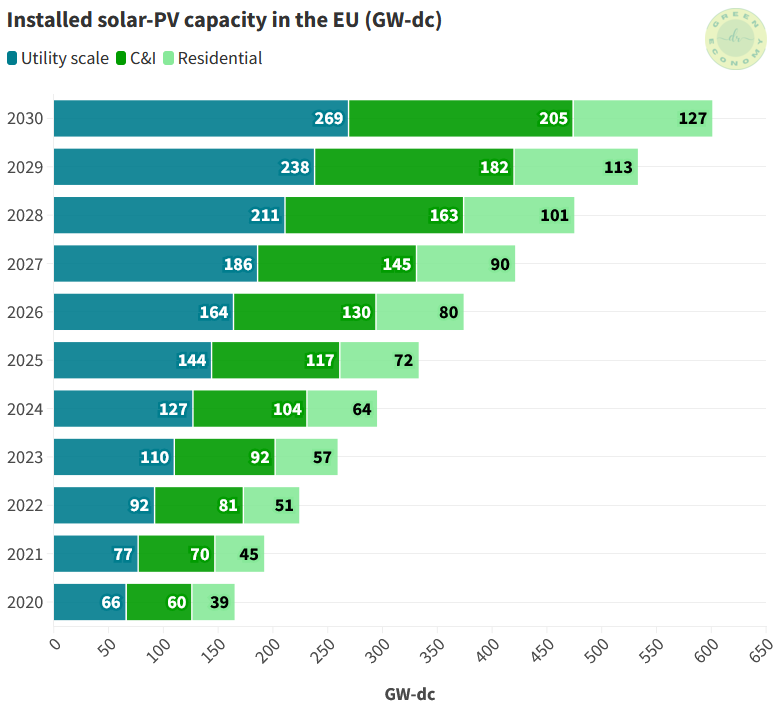
The most expensive component of solar energy is typically the battery for energy storage, which presents another challenge as it elevates the overall expense of energy storage and can limit its capacity.
Storage limitations
Solar panels painfully rely on weather conditions to generate electricity. This necessitates investing in batteries for energy storage. While large-capacity batteries can be a valuable addition to a solar panel setup, they introduce extra costs, space requirements, and maintenance demands.
While smaller-scale residential setups can invest in solar batteries for power storage, larger-scale solar energy storage for corporations remains very expensive. The highest possible estimation of solar batteries with their capacity range in the U.S. is shown in Figure 3.
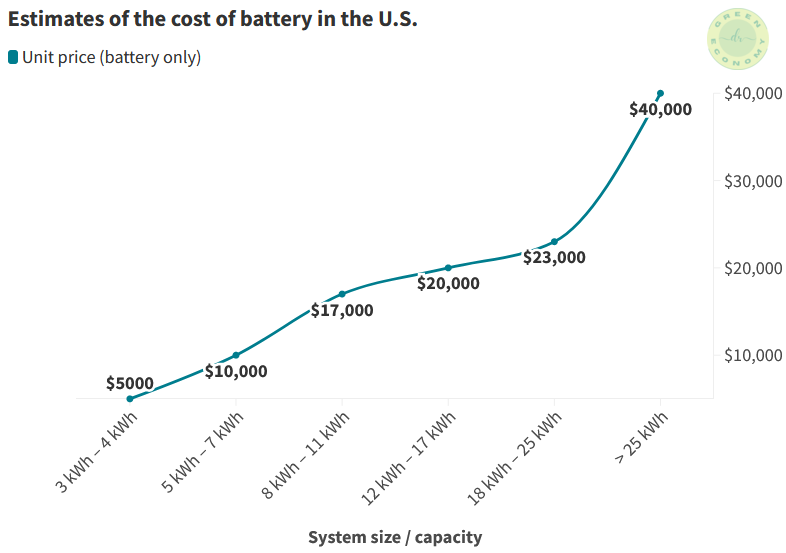
Limited space
Solar panels are space-intensive by nature, meaning they require a significant amount of area wherever they are installed. Ideal roofs should be oriented towards the sun to capture the maximum amount of sunlight.
The space occupied by solar panels can vary widely, ranging from tens of square feet to thousands of square feet, depending on the desired scale of power generation.
Most residential properties typically offer ample space to accommodate solar panels capable of meeting their entire electrical needs. However, for office buildings, large apartment complexes, and high-rise structures, the available roof space may not be enough to support the installation of a sufficient number of solar panels.
Consequently, many commercial properties, despite their desire to transition to solar energy, may opt to stick with non-renewable energy sources due to these challenges.
Related: Disadvantages of renewable energy
Manufacturing-related pollution
While solar energy is a clean and renewable source of power, certain stages in the life cycle of solar panels can have adverse environmental impacts, particularly during manufacturing and decommissioning.
The manufacturing process of solar panels can harm the environment by emitting byproducts that can disrupt both physical and biological conditions, leading to pollution of soil, water, and air.
These environmental consequences are more pronounced when unsustainable methods and materials are employed, undermining the goal of reducing the environmental impact associated with solar panels.
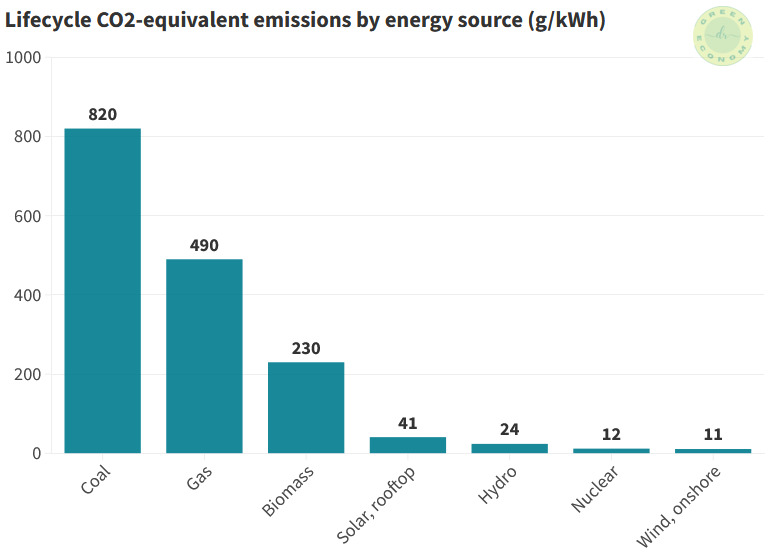
However, solar energy is still undeniably more environmentally friendly than non-renewable energy sources (See Figure 4).
Weather dependence
The weather-dependent nature of solar panels presents a challenge by limiting their reliability and confining electricity generation to daylight hours when sufficient sunlight is available. The energy production fluctuates from dawn to dusk, varies day by day, shifts with the seasons, and is influenced by geographical location.
Interestingly, solar panels can still function effectively in ambient light and generate significant energy even in foggy conditions or on overcast days. Taking Germany as an example, despite not having a particularly sunny climate, ranks as one of the top solar energy-producing countries in the EU.
Hot weather is known to decrease efficiency. Because solar panels are tested at 25°C (77°F) and generally have a peak working temperature range of between 15°C and 35°C. When the temperature gets higher, this affects the efficiency of solar cells.
Rainfall, for example temporarily reduces the efficiency and output of solar panels, although it has the beneficial effect of cleaning their surfaces from dust and debris.
Lower efficiency
Solar panels have an inherent efficiency limit, preventing them from achieving a complete conversion of 100% of the incident solar radiation. Various factors contribute to the restricted efficiency of solar cells, including their orientation, composition, and electron dynamics.
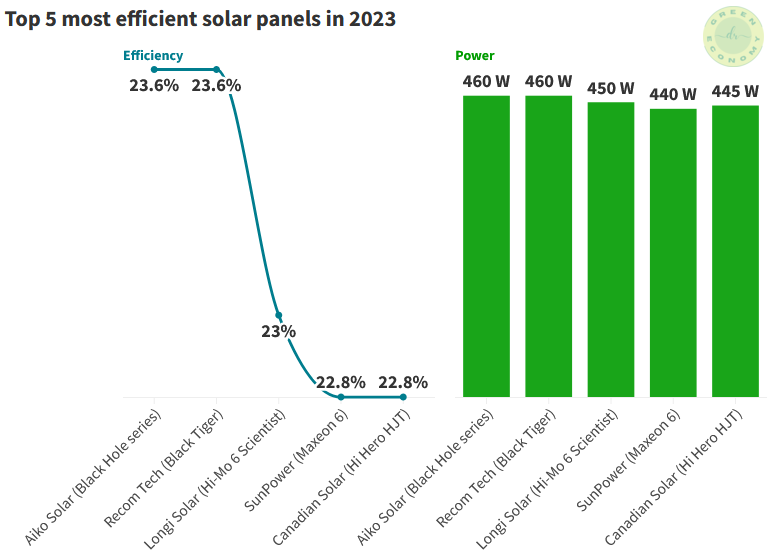
The lowest efficiency ratings are typically of the polycrystalline variety. This is because polycrystalline panels exhibit irregularities in energy conversion across their surfaces. Generally, the energy efficiency of a polycrystalline solar panel seldom exceeds 15%.
In contrast, monocrystalline panels and other emerging solar capture technologies can achieve higher efficiencies, falling within the range of 15-23%. Figure 5 demonstrates the top five most efficient (on left) solar panel models, with their power (on right) in 2023.
However, it doesn't imply that a solar panel with 22.8% efficiency isn't working hard; rather, it signifies how much space is needed to produce a certain amount of power. For example, a 445 W panel with 22.8% efficiency can generate the same power as a 445 W panel with 23% efficiency—the difference lies in size. But bear in mind, bigger size means more expensive.
Potential scarcity of raw materials
The production of solar panels relies on essential raw materials such as silicon, aluminum, indium, and gallium. While some of these materials, like silicon, are widely available on the Earth's surface, rare elements such as gallium, utilized in certain components of solar panels, can become scarce, leading to potential disruptions in manufacturing.
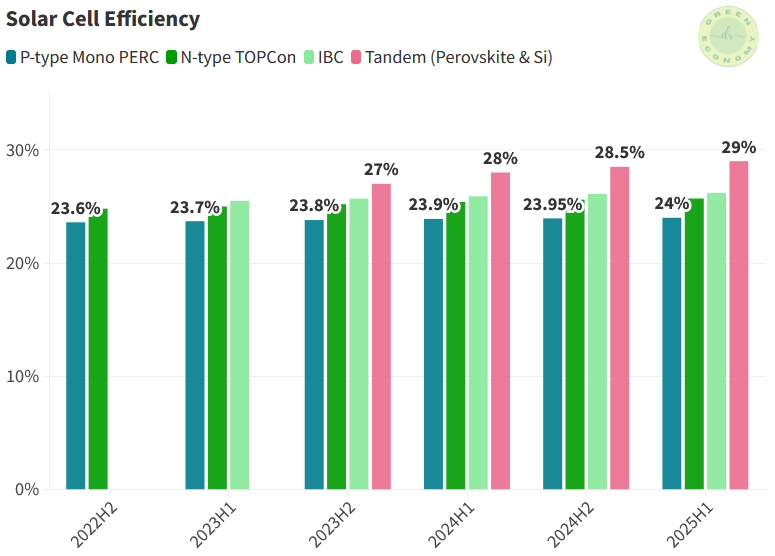
Figure 6 displays the efficiency of different solar cells from 2022 till the first half of 2025, announced by JA Solar. Currently, panels employing Back-contact (IBC) cells lead in efficiency, reaching levels of up to 25.7%. Additional efforts are going on to develop ultra-high-efficiency Tandem Perovskite cells, which are expected to become commercially viable within the next two years.
Related: Solar energy facts: a win-win for businesses and the planet
The high capital cost is often indicative of expensive raw materials and manufacturing processes, resulting in relatively low-profit margins for solar energy technology manufacturers and vendors. However, it's worth noting that solar prices have witnessed a substantial decline in recent years.
The expensive cost of solar panels, which is at least within our capability to mitigate requires strategies, such as substituting raw materials with more affordable alternatives and advancements in battery technology.
